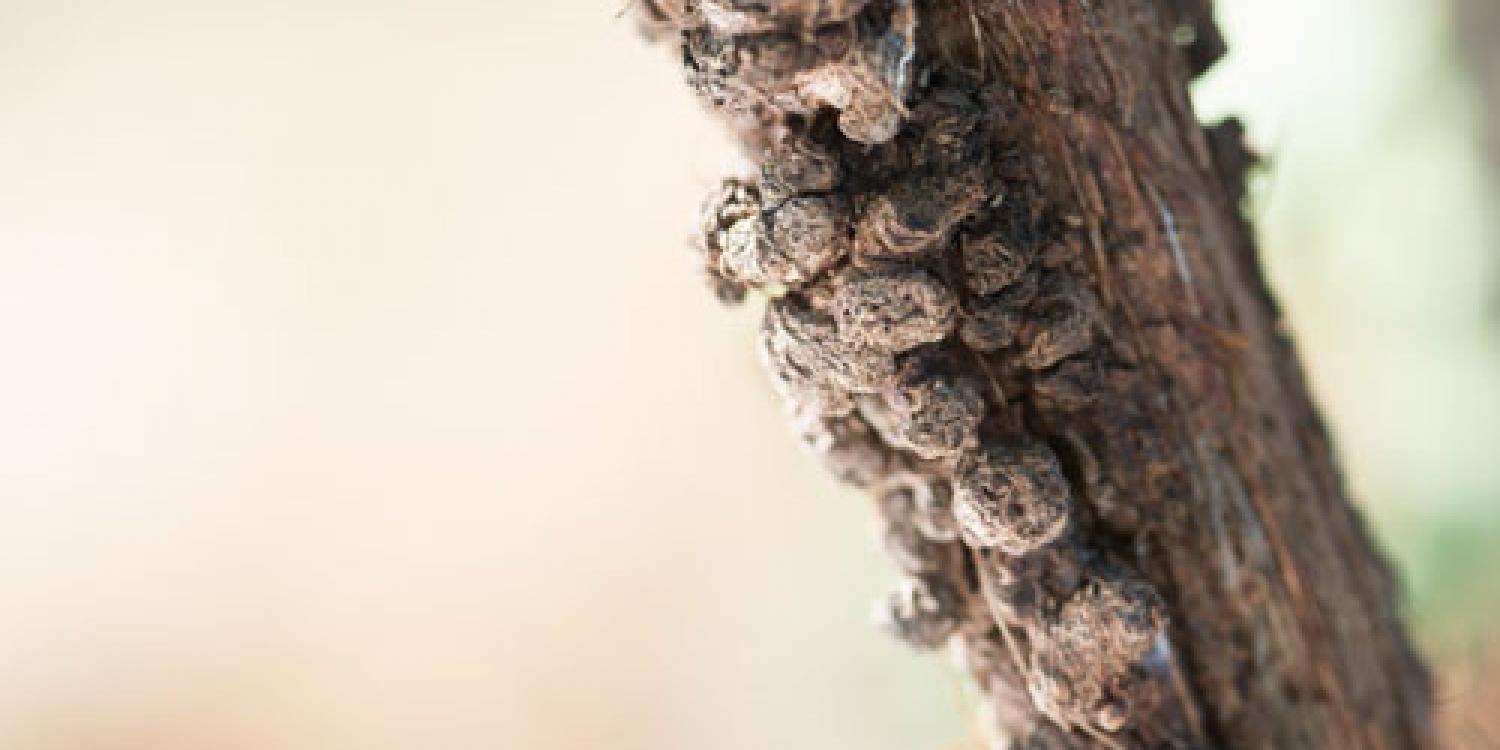
Crown gall disease is an incurable malady that affects numerous species of plants, including many of economic importance to Oregon. Crown gall disease is caused by a soil bacterium that modifies the plant’s genome and causes large, cancer-like tumors (galls) to grow at its base. The soil-borne pathogen, Agrobacterium tumefaciens, affects woody and herbaceous plants, including fruit and nut trees, grapevines and roses.
In 2017, researchers in Oregon State University's College of Agricultural Sciences took a major step toward developing an on-site detection tool for crown gall disease. They developed molecular tools to work with commercially available kits that allow the user to quickly and effectively test plants for the disease, using a dipstick that reveals the presence of the pathogen within minutes.
Big numbers illustrate the importance of the research. The greenhouse and nursery, fruit and nut and wine grape industries total about $1.75 billion in economic activity each year, according to the Oregon Department of Agriculture.
The researchers developed probes so sensitive that they can detect the pathogen from a tiny sample. Traditional methods of detection of Agrobacterium take several hours using specialized equipment.
Early and rapid detection of Agrobacterium is key to the management of crown gall because there is no cure for the disease, said Jeff Chang, professor in the Department of Botany and Plant Pathology.
“Growers can’t predict when it will strike, and once it has, the disease cannot be cured because the plant is permanently genetically modified and will form the tumors,” Chang said. “These growths can be lethal to young plants and they are also grotesque, so they compromise the aesthetic value of these plants. Nurseries typically go through extreme protocols to keep their sites clean, but once infection occurs, the only solution is to throw away diseased plants and clean up the site.”